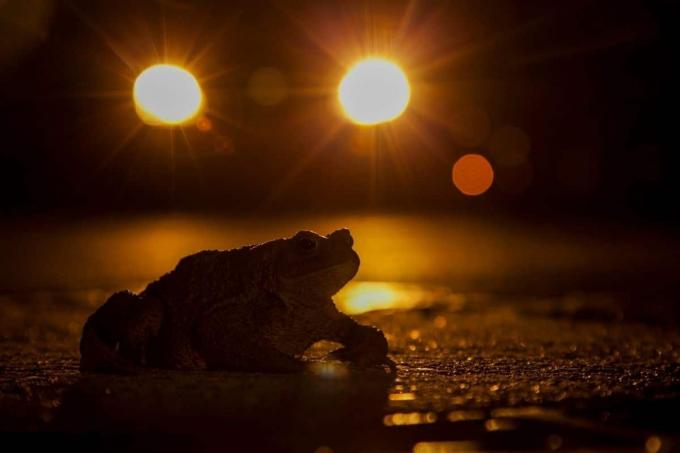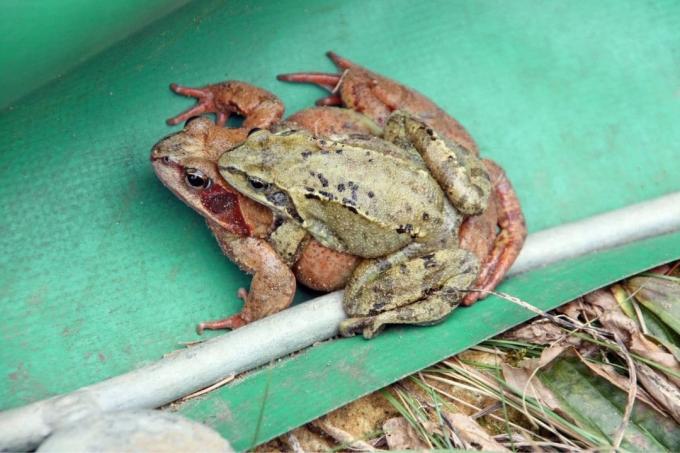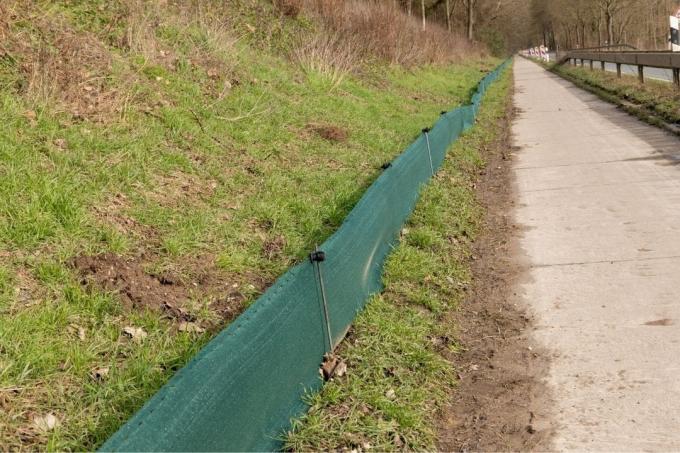
table of contents
- Time of the hike
- Toad migration: cause
- places
- drove
- Protective measures
- frequently asked Questions
When toads and frogs wake up from winter rigor, they go to spawning waters. However, during this toad migration, some things can become dangerous for them. But it is possible to help you.
In a nutshell
- Spawning waters are instinctively sought out
- Barriers protect against traffic
- Offering alternatives is important for protection
- Temperature plays a crucial role
- The time is usually in late spring
Time of the hike
This is determined by the temperature. As soon as the night is above 5 ° C, frogs and toads become more agile again and set off on their way.
When this time occurs depends on:
- current weather conditions
- climate
- region
- temperature
In mild regions or years, this can be expected as early as February. If it stays cold for a long time, the migration may not start until April. Most of the time, however, this can be expected in March. Then you should be particularly careful on the streets.

Toad migration: cause
Toads and frogs seek winter quarters when temperatures drop and fall into a frozen state here. During this time they use significantly less energy. Since they can hardly move, however, they are at the mercy of prey. Winter dormancy is less dangerous through a protective and narrow quarter.
After winter, the breeding season begins and the animals seek out the water in which they developed from tadpoles.
places
The hikes take place where there are comparatively calm waters. Recreation areas and pools that are heavily frequented by humans and dogs are not included. But for that:
- remote lakes and ponds
- Garden ponds
- Pool

Note: The animals are more common in residential areas with many gardens and ponds than in a bathing lake. The same applies to gardening associations.
drove
During the Toad migration from the garden the animals have to face some dangers. This includes:
- Holes and deep trenches
- Predators
- Road traffic
In addition, more and more areas are being taken over by people and developed structurally. As a result, among other things, the spawning waters disappear.
Protective measures
Because there are some dangers on the hike, protective measures are useful. These include, among others:
- offer alternative spawning waters
- buried buckets
- Dig trenches, which are checked daily
- Roadside nets or fences

Of the Nature Conservation Association (NABU) looks annually for helpers who can be regionally active and intervene to support the protection of the animals. If you live near a toad hiking trail, you can be active and contribute a lot to animal welfare.
frequently asked Questions
Because they are beneficial insects and an important part of the local nature. They eliminate insects and contribute to biodiversity. In addition, it is comparatively easy to implement protective measures. You don't need a lot of effort or time.
A garden pond and natural areas in your own garden are ideal. This not only applies to toads and frogs, but also to insects, birds, hedgehogs and many other native wild animals. Also avoid the use of insecticides.
You will be taken to a safe body of water. Ponds and lakes with a shallow bank area and quiet surroundings are ideal.
The smaller specimens are males. In a sense, they “ride” on the larger females. In this way they secure their partner until they reproduce, if they have already found one.
Yes, for mating and in case of danger they can make short but quite loud noises. Even with mating calls, however, they are more cautious than frogs.


